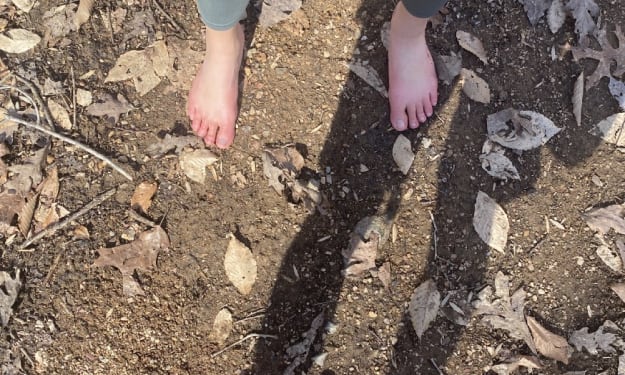What Grounding is and How it Works
Grounding, while often overlooked, can play a large role in improving recovery.

Grounding, while often overlooked, can play a large role in improving recovery. This method has long been used in the Tour de France to help increase the biker's rate of recovery after grueling days of biking 100 miles. Several studies have been done on grounding and even some books are written boasting about its benefits such as improving sleep, reducing inflammation, improving cardiovascular disease, reducing muscle damage, and can even improve mood. However, most of the evidence is either anecdotal or small studies. While there is still a lot of research to be done on grounding, the results we do have are very exciting.
With that being said, grounding is the act of electrically reconnecting to the earth's surface. This can be done by walking barefoot on naturally occurring surfaces like sand, grass, and dirt and some non-naturally occurring surfaces like cement. The beach is perhaps the best place to ground as the salt water along with the sand is very conductive. Grounding may help explain why people always feel good at the beach.
Our bodies tend to generate free radicals which are essentially molecules that are missing an electron. The imbalance of missing an electron causes them to tear apart their surroundings until they find an electron to rip away from another molecule producing another free radical. This causes a chain reaction that doesn’t stop until either two free radicals combine or they find a lone electron. Grounding reconnects us to the earth's surface, which has plenty of electrons to give us. Unfortunately, most of us live our lives completely disconnected from the earth and are thus electron deficient. Grounding provides us with a cure to free radicals and stops the chain reaction in its tracks.
At the time of writing, grounding is in its infancy in terms of research, however, many studies are beginning to be published. The studies published so far have had very positive results and hopefully, grounding will begin to receive much more funding so that more research can be done in the future. Researchers have used a combination of medical thermal imaging, speckle contrast laser cameras (measures blood flow), blood work, blood pressure cuffs, and cameras to document the effects grounding had on participants. With this information, they found that grounding had profound effects on reducing inflammation. They believe this is due to the mobile electrons from the earth creating an antioxidant microenvironment and preventing some if not all reactive oxygen species (ROS or free radicals) from forming. The research was able to statistically show beneficial effects on sleep, pain, inflammation, blood pressure, wound healing, and stress just to name a few.
Thankfully, grounding is super simple to do and it's easy to multitask while doing it. All that is required is bare skin contact with the earth's surface or some conductive material in between such as leather or copper. There are plenty of products for sale that allow you to make grounding even more convenient such as bed mats so you can ground as you sleep, mats that go under your desk so you can ground at work, and even conductive shoes to wear instead of going barefoot. While these products are nice and make things more convenient, they can get pricy but thankfully they are not required to get the benefits of grounding. Thankfully any ground will work, as long as it's the earth and not a man-made surface with the exception of concrete. The good news for all you beach lovers out there is that the beach is one of the best places to ground as the sand and saltwater are great conductors. To see the benefits of grounding many doctors recommend starting out with 10 minutes a day and continuing as time allows, the more time spent grounding the better.
While there are many ways of trying to reduce free radicals and the damage that they ensue, grounding may be the cheapest and least intrusive way of reducing free racial damage. Grounding is easy to do and free, as it only requires access to a patch of ground which makes it something that everyone can benefit from.
References:
Menigoz, W., Latz, T. T., Ely, R. A., Kamei, C., Melvin, G., & Sinatra, D. (2020). Integrative and lifestyle medicine strategies should include earthing (grounding): Review of Research Evidence and Clinical Observations. *EXPLORE*, *16*(3), 152–160. [https://doi.org/10.1016/j.explore.2019.10.005](https://doi.org/10.1016/j.explore.2019.10.005)
Oschman, J., Chevalier, G., & Brown, R. (2015). The effects of grounding (earthing) on inflammation, the immune response, wound healing, and prevention and treatment of chronic inflammatory and autoimmune diseases. *Journal of Inflammation Research*, 83. [https://doi.org/10.2147/jir.s69656](https://doi.org/10.2147/jir.s69656)
About the Creator
Enjoyed the story? Support the Creator.
Subscribe for free to receive all their stories in your feed. You could also pledge your support or give them a one-off tip, letting them know you appreciate their work.






Comments
There are no comments for this story
Be the first to respond and start the conversation.